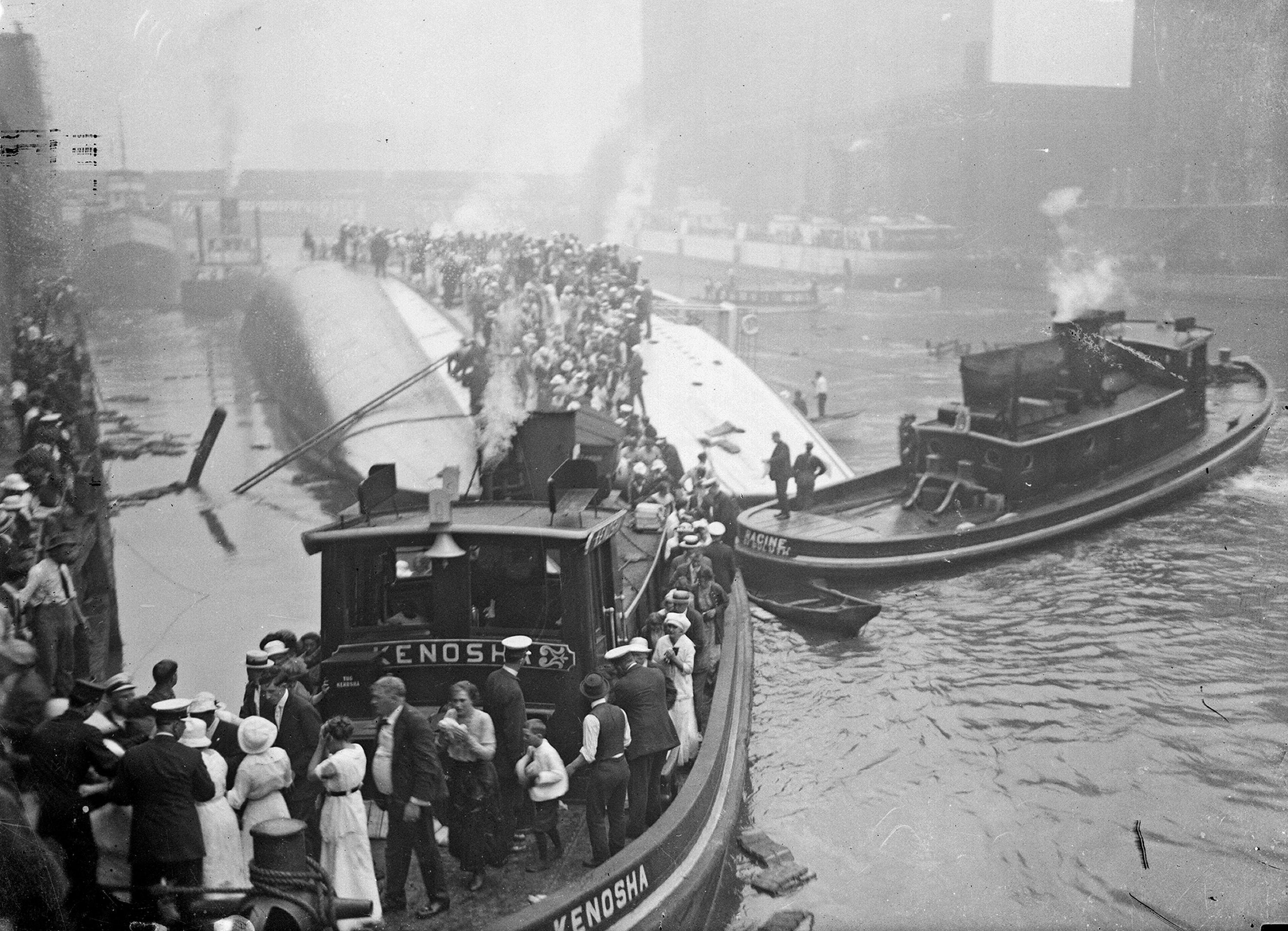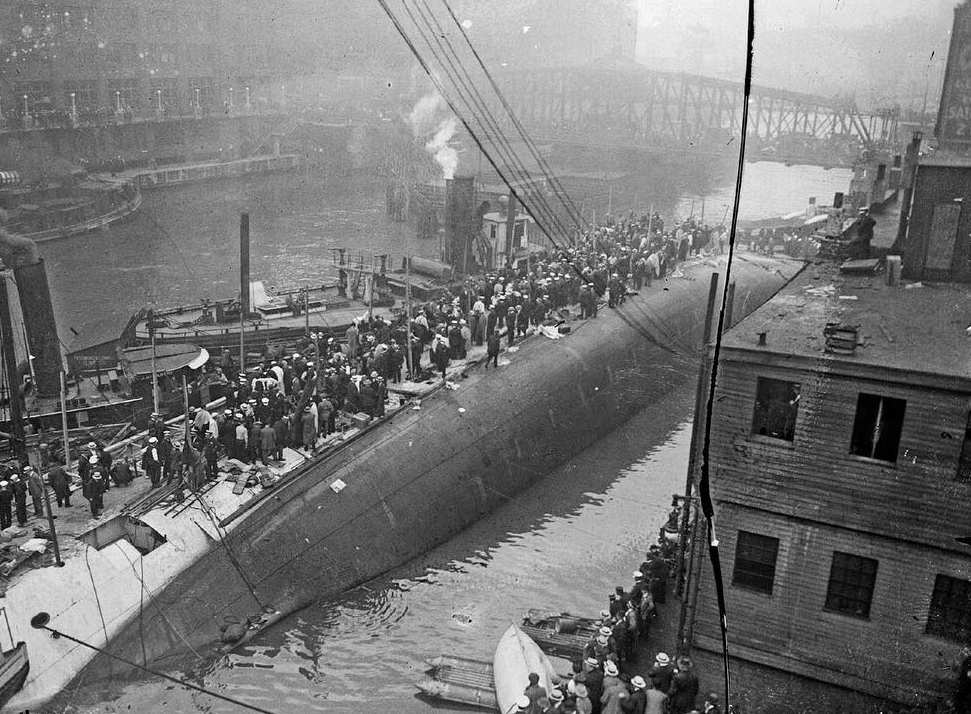Eastland disaster was a deadly boat accident that took place in Chicago on July 24, 1915. That day, nearly 850 people died after the luxury tour boat Eastland overturned in the Chicago River. The steamship, filled to capacity, capsized as it was preparing to leave its dock. Following the disaster, investigators concluded that the Eastland had been poorly designed and modified. The accident raised concerns about the safety of steamships in the Great Lakes region.
Background.
The Jenks Ship Building Company built the Eastland for the Michigan Steamship Company in 1902 and 1903. A group of Cleveland-based investors called the Lake Shore Navigation Company bought the boat in 1907. The Eastland Navigation Company, also based in Cleveland, owned the ship from 1909 to 1914. Many early passengers described the ship as unstable, especially during loading or unloading. But in 1910, the Eastland Navigation Company took out an ad in two Cleveland newspapers to deny the rumors that the ship was unsafe. The ship was modified several times to increase its speed, air flow, safety, and passenger capacity. But investigators later concluded that the modifications likely made the ship more top-heavy and unstable. The St. Joseph-Chicago Steamship Company bought the Eastland in 1914.

The disaster.
On the morning of July 24, 1915, more than 2,500 people—most of them employees of the Western Electric Company and their families—lined up to board the Eastland at the ship’s dock near the Clark Street Bridge. The Eastland was one of five ships the Western Electric Company had chartered that day to take its employees across Lake Michigan to its annual company picnic in Michigan City, Indiana. The Eastland’s captain was Harry Pedersen, and its chief engineer was Joseph Erickson. Since the completion of the ship’s most recent modifications earlier in 1915, its largest load had been less than half the number of people boarding that day.
Passengers began to board the ship around 6:30 a.m. Within a few minutes, the ship began to list (tilt) to its starboard (right) side. The Eastland’s engineer then changed water levels in the ballast tanks (tanks that contain water in the hold of a ship) in an attempt to steady the ship. The measure worked temporarily, but the ship soon began to list to its port (left) side. By 7:10, the vessel had reached full capacity.

Ship officers made several attempts to stabilize the vessel, but the Eastland remained unsteady. Water began to enter at the ship’s port-side gangways (openings for loading passengers), and the ship started to tilt at a steeper angle, causing panic. At about 7:28, while still partially tied to its dock, the Eastland began to roll over. Passengers outside on the top decks jumped or fell off the ship, landing on the dock or in the river. Passengers inside the ship on lower decks tried to exit the vessel via staircases as water rushed in beneath them. Many became trapped after the ship rolled 90 degrees to its left. By 7:30, the ship lay on its side on the river’s muddy bed. Survivors scrambled onto the side of the overturned ship or onto nearby boats that rushed to help. Despite rapid rescue efforts, nearly 850 people died. Most of them either drowned within the ship’s interior or suffocated there after being crushed by people and debris.
Aftermath.
Soon after the disaster, the Eastland’s owners and officers were charged with conspiring to operate an unsafe ship, but a federal court found them not guilty. In a civil trial that concluded in the 1930’s, a court placed most of the blame on Erickson, the ship’s engineer, for not properly operating the ship’s ballast system. Today, however, most historians and shipbuilding experts place the blame on the ship’s initial design—which made it unstable—and on the modifications and outsized passenger load that made it top-heavy.
Salvage engineers raised the Eastland in August 1915, and the U.S. Navy later refitted it for use as a gunboat. The Navy renamed the ship USS Wilmette in 1918 and used it primarily as a training ship on the Great Lakes. The Navy took the ship out of service in 1945 and sold it for scrap in 1946.
